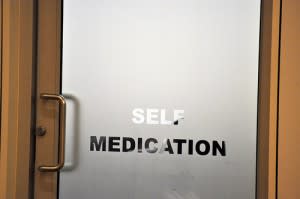What NDR 2013 Means For the Future of MediShield
It took real willpower to watch NDR 2013 without giving in to my urge to play a Spartacus: Blood and Sand or Game of Thrones DVD. In fact, my head is still playing the infamous line: “Don’t worry, go ahead, plan on it, get married, get your flat!” (Translation: please, please, please give birth to more taxpayers… err, citizens!).
So what did I learn from the Prime Minister’s speech? Flats are now “affordable,” ports and airports will transform into residential/shopping areas, PSLE scores will be replaced by letter grades, and Singapore will now have a new universal healthcare plan providing cradle to grave coverage for everyone, called MediShield Life.
Here’s what you can expect from your new healthcare scheme, MediShield Life:
What Do Our Current National Healthcare Savings Schemes Cover?
Aren’t you glad that receiving medical care in Singapore is a lot of accommodating than other nations?
To understand MediShield Life, we must first examine the coverage and benefits provided by our existing national healthcare schemes – Medisave and MediShield. If you don’t know too much about Medisave or MediShield, this should clear up any confusion.
Medisave
The idea was to encourage saving for “proper” medical treatment.
Since the days of the floppy disk and the $50k 3-Room flat (aka mid-1980s), Singaporeans have been paying into Medisave, a national savings scheme that sets aside 7% – 9.5% of our monthly salary to cover some personal/family medical expenses (hospitalization, surgery, and outpatient care).
But like every other national savings scheme, withdrawal limits were set to “encourage” us to put it aside only for urgent medical matters. In fact, the amount we can withdraw from Medisave is restricted by the type of medical treatment required – from inpatient surgical procedures to immuno-suppressant medication.
Aside from a strict withdrawal policy, Medisave also has a low Maximum Contribution Ceiling (MCC), which is only $45,500 today (with any excess going to your “special account” if you’re under 55 and your retirement account if you’re above 55). If you think that’s enough for your healthcare expense, you should check out the Ministry of Health’s Hospital Bill Sizes page to see how much a “simple” operation can cost you.
Only a few years after Medisave was introduced, the government realized that it wasn’t enough (and still isn’t) to cover expensive medical bills. If you needed to undergo a major operation or treatment for a chronic illness, your Medisave account would run out as fast as N95 masks on a hazy day.
*Important Note: As of late August, the Ministry of Health (MOH) extended Medisave to cover five new chronic conditions: osteoarthritis (joint diseases), benign prostatic hyperplasia (prostate gland enlargement), Parkinson’s disease, and nephritis/nephrosis (kidney disease).
MediShield
It’s good to know that when your real-life shield fails to save you from a hospital visit, MediShield will help with your medical expenses.
With Medisave covering costly medical bills about as adequately as summer wear in the Arctic, the government faced a tough question – How could it help Singaporeans with rising healthcare expenses without using too much coin from the government coffers? The answer came in 1990 with the introduction of MediShield, a medical insurance scheme that gave greater financial assistance to Singaporeans undergoing treatment at B2 and C Class Wards.
MediShield is available to all Citizens and PRs at all ages, and currently covers about 92% of Singaporeans. You can enroll either online or by submitting this form to the CPF Board. MediShield also has an annual limit of $70,000 and a lifetime limit of $300,000.
It’s a give-and-take scheme that comprises 3 parts:
Part 1 – The Premium You Must Pay
Everyone taking part in MediShield has to pay an annual premium either in cash or through their Medisave account. It starts out at a measly $50 a year, but jumps dramatically by the time you’re retirement age to as much as $1,190! You can find a full listing of the MediShield premiums here.
As of March 2013, if you join the scheme before you hit 60, you can get a premium discount from age 71 onwards.
Here’s a chart of the amount you can expect to have discounted from your premium. The left column indicates when you join the scheme, and the top row shows the age ranges and the respective discounts you enjoy depending on when you joined:
Age | 71 – 73 | 74 – 75 | 76 -78 | 79 – 80 | 81 – 83 | 84 – 90 |
30 < | $156 | $184 | $209 | $246 | $434 | $449 |
31 – 40 | $117 | $138 | $157 | $184 | $326 | $336 |
41 – 50 | $78 | $92 | $104 | $123 | $217 | $224 |
51 – 60 | $39 | $46 | $52 | $61 | $108 | $112 |
Part 2 – The Deductible
Whenever you make a claim with MediShield, you must pay the deductible out of pocket once per policy year, no matter how many claims you make that year.
Here are the deductibles:
Age | Ward Class A – B2 | Ward Class C |
80 < | $2,000 | $1,500 |
81 > | $3,000 | $2,000 |
The deductible is high to discourage small claims that would “drain the system.” So if your claim is below the deductible amount, you must either use your own cash or MediShield, which is technically the same thing.
Part 3 – The Co-Insurance
The final part of the equation involves the co-insurance you must pay on your claim and the percentage of the medical bill that MediShield will let you claim.
Here’s a chart of the co-insurance amount you’ll need to pay:
Claimable Amount | Percentage You Must Pay | |
Ward Class A – B2 | $1,501-$3,000 | 20% (up to $300) |
$3,001-$5,000 | 15% (up to $300) | |
$5,000+ | 10% (varies) | |
Ward Class C | $1,501-$3,000 | 20% (up to $300) |
$3001-$5,000 | 15% (up to $300) | |
$5,000+ | 10% (varies) |
The percentage of your hospital bill you can claim with MediShield depends on both your citizenship status (Singapore Citizen/PR) and the ward class you’re being treated in.
Here’s a chart of how much MediShield will let you claim:
Singaporean Citizen | Singaporean PRs | |
Ward Class A/Private Hospital | 35% | 35% |
Ward Class B1 | 43% | 38% |
Ward Class B2+ | 70% | 47% |
Ward Class B2 | 100% | 58% |
Ward Class C | 100% | 44% |
Subsidized Short Stay | 100% | 58% |
Subsidized Day Surgery | 100% | 58% |
Private day Surgery | 35% | 35% |
Subsidized Outpatient | 100% | 67% |
Unsubsidized Outpatient | 100% | 100% |
Final – Calculation of How Much You’ll Pay
Let’s say you’re a 35-year Singaporean citizen who underwent treatment at a Class C ward, receiving a $15,000 bill from the hospital (we won’t count the heart attack you got immediately after seeing the bill). Because you’re a citizen, who used a Class C ward, you can claim 100% of your bill through MediShield.
First, because you received treatment while staying in a Class C ward, you’re going to pay a $1,500 deductible.
Second, subtract the deductible from the bill to see how much you’ll be claiming for co-insurance ($15,000 – $1,500 = $13,500), which is $13,500 in this case.
Here’s how to calculate your co-insurance:
You’ll pay 20% of the first $1,500 after the deductible ($1,501-$3,000) = $300
You’ll pay 15% on the next $2,000 ($3,001-$5,000) = $300
You’ll pay 10% on the remaining bill amount ($5,000 – $13,500) = $850
Total = $1,400
Finally, add your deductible to your co-insurance to find out how much you’ll have to pay with cash and/or Medisave. $1,500 (deductible) + $1,400 (co-insurance) = $1,900 you’ll have to pay. This means MediShield will cover $13,100 of your medical bill. Not bad.
But if you want something a little more comfy than a Class C or B2 ward, MediShield claim coverage will disappear faster than an unlocked car in Malaysia. For example, if you applied that 15K hospital bill to a stay in a Class B1 ward, you’d have to pay $2,000 (deductible) + $659 (co-insurance) + $7,410 (57% of the bill not covered by MediShield) = that’s $10,069 in cash and/or Medisave!!!!!
Thankfully, CPF has a Medisave/MediShield calculator that makes it easier for you to compute the cost.
Private Integrated Shield Plans
Private Integrated Shield Plans offer extra “coverage” for your basic MediShield plan.
In 2005, the government allowed for private insurers to provide Medisave-approved plans that would integrate into your basic MediShield plan. These Private Integrated Shield Plans gave you extra benefits and coverage when receiving care in B1 and Class A wards.
Insurance expert and SingCapital CEO Alfred Chia believes that despite higher premiums and cash payment of riders, CPF members intending to seek comprehensive coverage for themselves and their family should upgrade to a Private Integrated Shield Plan for the following reasons:
More hospital options (ranging from restructured to private hospitals)
More options to buy insurance riders to cover Co-Insurance and Deductibles
Coverage is based on an “as charged” basis
Ability to opt for unlimited lifetime claim limits
Moratorium underwriting that can cover pre-existing illness
Wider coverage
Free coverage for your children
What Changes Will MediShield Life Bring?
MediShield Life brings MediShield “protection” for everyone! The price tag? Err… *mumble* *mumble* will pay for them.
During the NDR speech, the Prime Minister introduced several new amendments to MediShield, which will either go into effect immediately (like the Pioneer Generation Package) or in the near future. But the biggest healthcare announcement was the expansion of its expansion MediShield (now called MediShield Life) to cover all Singapore citizens, regardless of pre-existing conditions.
Here’s a rundown of what you can expect from MediShield Life:
Everyone gets covered – MediShield Life will now cover EVERY Singaporean citizen, from cradle to casket, including those with pre-existing conditions.
Pioneers covered – if you’re at or past the 90-year age limit for MediShield, you’ll receive immediate coverage under the Pioneer Generation Package for your remaining years of life.
You will contribute more – expect to shoulder more of the cost to support MediShield Life, which means higher Medisave contribution rates and taxes.
Welcome to the Hotel MediShield Life – Such a lovely place, so lovely in fact that you won’t have the option of leaving, because it’ll be mandatory for all citizens.
*Added Bonus* CHAS coverage expanded – The Community Health Assist Scheme (CHAS) will now be accessible to Singaporeans below the age of 40.
*Added Bonus * Medisave expanded – The list of ailments/conditions currently covered by Medisave will be extended, enabling everyone to use their funds for more types of medical treatment.
Lingering Questions about MediShield LIfe
This will be the biggest question of all…
While MediShield Life will bring basic medical insurance coverage to uninsured or under-insured Singaporeans, the Prime Minister’s speech lacked many important details. Just what details am I talking about? Here are a few on the minds of Singaporeans today:
How does the government intend to raise revenue for MediShield Life? (We’ve already got a clue to that already with the recent talk of raising the GST, and a probable hike in the income tax rate).
With MediShield Life now being as mandatory as National Service (you can’t opt out!), how will this move affect those that are privately insured, or have Private Integrated Shield plans?
The Prime Minister already mentioned that Medisave contribution rates will have to go up progressively over time, so how much of a contribution hike are we talking about?
Will the Medisave and MediShield Life withdrawal limits increase to keep up with the growing cost of healthcare?
Will means-testing for government subsidies become even more stringent as a result of universal coverage?
Will MediShield Life’s “expanded” coverage to include “pre-existing conditions” also cover those with conditions that often excluded them from receiving enough medical insurance coverage? This group includes those with disabilities, special needs (autism, epilepsy, etc.), HIV patients, and mental health problems.
Will non-citizens contribute to MediShield to help ease the financial burden?
Will MediShield Life cover individuals who have already exhausted their MediShield claim limits?
Will healthcare be “rationed” to prevent overuse of existing healthcare resources?
I’m sure that Singapore’s got a Manhattan Project-like team of experts evaluating how to answer all of these questions. Hopefully, we’ll get some concrete answers by Singapore Budget 2014 early next year. Stay tuned with us on Facebook as we keep track of healthcare costs and policies.
What do you think of the latest changes to Singapore’s healthcare schemes? Let us know your opinions here.
Image Credits:
Roving I, Chris Turner Photography, Clinic In A Can, Jumpin’Jack, dakaodo, James Debono, joeysplanting
Get more Personal Finance tips and tricks on www.MoneySmart.sg
Click to Compare Singapore Home Loans, Car Insurance and Credit Cards on our other sites.
More From MoneySmart






